In the realm of hair care, the significance of hair oil treatments cannot be overstated. These treatments have been embraced for centuries, transcending cultural boundaries, and continue to be a cornerstone of modern hair care routines. Hair oil treatments offer a myriad of benefits, ranging from deep nourishment and hydration to protection against environmental stressors.
Embark on a journey into the world of hair oil treatments, exploring their rich history, diverse types, and the transformative effects they can have on your hair’s health and beauty.
From ancient civilizations to modern-day hair care enthusiasts, hair oil treatments have stood the test of time. Whether it’s the nourishing properties of coconut oil, the restorative powers of argan oil, or the protective shield of jojoba oil, these natural elixirs have been revered for their ability to revitalize and rejuvenate hair.
Discover the science behind hair oil treatments, unraveling the mechanisms by which they penetrate the hair shaft, providing deep conditioning, and safeguarding hair from the harsh realities of environmental stressors.
Hair Care Oil Treatment
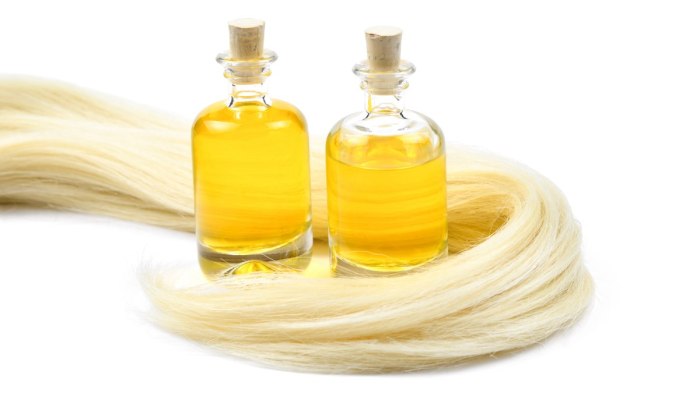
Hair care oil treatment involves applying oil to the hair and scalp to improve hair health and appearance. It is a common practice in many cultures and has been used for centuries.
Hair oil treatments offer several benefits, including nourishment, hydration, and protection. Oils can penetrate the hair shaft, providing essential nutrients and moisture to improve hair strength and elasticity. They can also help protect hair from damage caused by environmental factors, such as heat styling and UV exposure.
History of Hair Oil Treatments
The use of hair oil treatments has a long history, dating back to ancient civilizations. In ancient Egypt, oils such as castor oil and coconut oil were used to protect hair from the harsh desert climate. In ancient Greece, olive oil was commonly used to condition and style hair.
In India, coconut oil, sesame oil, and amla oil have been used for centuries to promote hair growth and scalp health.
Types of Hair Oil Treatments
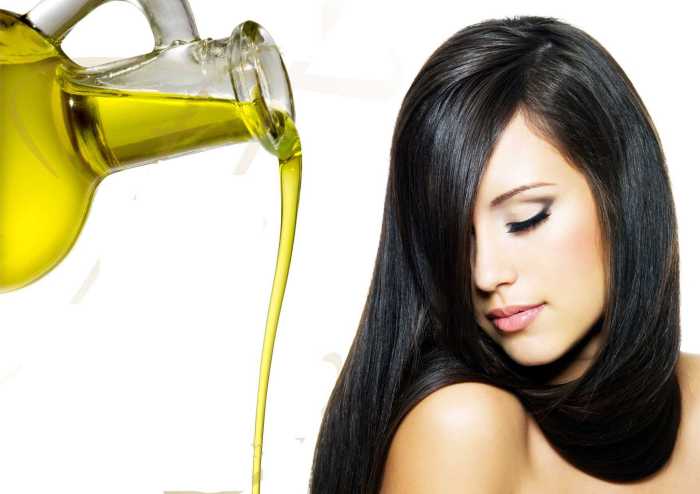
Hair oil treatments are classified into various types based on their ingredients and properties. Understanding the differences between natural and synthetic oils, as well as popular hair oil treatment options, can help you choose the most suitable treatment for your hair type and concerns.
Natural Oils
Natural oils are derived from plant sources and are rich in nutrients and antioxidants that benefit hair health. Some common natural oils used in hair treatments include:
- Coconut Oil: Known for its moisturizing and nourishing properties, coconut oil helps tame frizz, prevent split ends, and promote scalp health.
- Argan Oil: Rich in vitamin E and fatty acids, argan oil adds shine, reduces dryness, and protects hair from environmental damage.
- Jojoba Oil: Similar to the sebum produced by the scalp, jojoba oil helps balance oil production, moisturize hair, and prevent dandruff.
Synthetic Oils
Synthetic oils are man-made and often used in hair care products due to their stability and long shelf life. Common synthetic oils include:
- Mineral Oil: A non-penetrating oil that coats the hair shaft, providing a protective layer and reducing frizz. However, it can weigh hair down and hinder nutrient absorption.
- Dimethicone: A silicone-based oil that smooths hair, reduces frizz, and imparts shine. It can accumulate on the hair over time, requiring regular clarification.
Popular Hair Oil Treatments
There are numerous hair oil treatments available, ranging from DIY recipes to commercially produced products. Some popular options include:
- Hot Oil Treatment: Involves applying warmed natural oil to the scalp and hair, then covering it with a shower cap for deep conditioning and nourishment.
- Leave-In Oil Treatment: A small amount of oil is applied to damp or dry hair, left in, and not rinsed out. This helps maintain moisture and protect hair from damage.
- Pre-Shampoo Oil Treatment: Applying oil to the hair before shampooing helps protect it from the drying effects of surfactants in shampoo.
Choosing the right hair oil treatment depends on your hair type, concerns, and desired results. Natural oils are often preferred for their nourishing properties, while synthetic oils provide more temporary effects. Experimenting with different oils and application methods can help you find the best treatment for your hair.
Benefits of Hair Oil Treatments
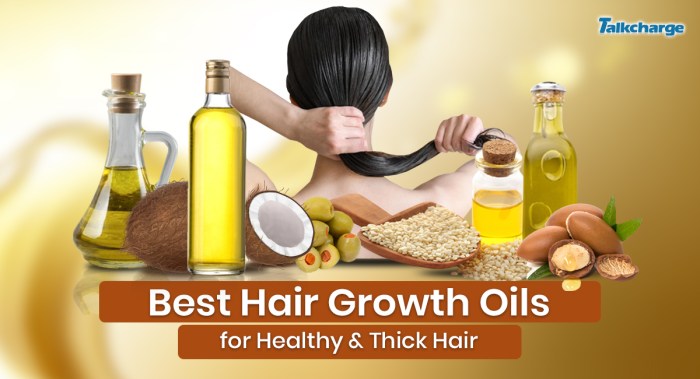
Hair oil treatments have been a staple in hair care routines for centuries, and for good reason. These oils offer a range of benefits that can help improve the health and appearance of your hair.One of the primary benefits of hair oil treatments is their nourishing properties.
Hair oils are rich in essential fatty acids, vitamins, and minerals that can penetrate the hair shaft and provide deep conditioning. This helps to strengthen the hair, reduce breakage, and improve overall hair health.Hair oil treatments can also provide protection against environmental stressors, such as UV damage and heat styling.
The oils can create a protective barrier on the hair, helping to shield it from the sun’s harmful rays and the heat from styling tools. This can help to prevent damage and keep your hair looking healthy and vibrant.Finally, hair oil treatments can help improve scalp health, reduce dandruff, and promote hair growth.
The oils can help to soothe the scalp, reduce inflammation, and remove dead skin cells. This can help to create a healthy environment for hair growth and reduce the risk of dandruff. Additionally, some hair oils, such as rosemary oil and peppermint oil, have been shown to stimulate hair growth.
How to Apply Hair Oil Treatments
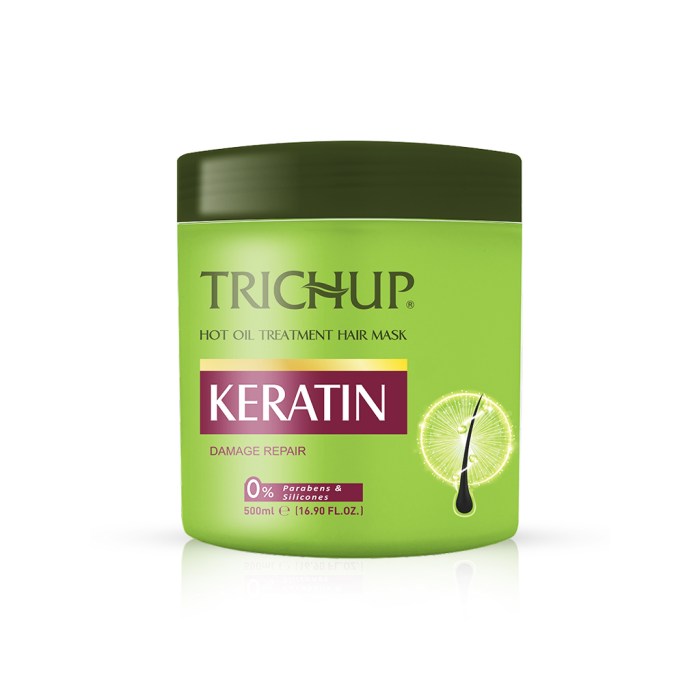
Applying hair oil treatments effectively involves selecting the right oil for your hair type and scalp condition, followed by the appropriate application method. This ensures optimal results and nourishment for your hair.
Choosing the Right Oil
Selecting the right oil for your hair oil treatment is crucial. Consider your hair type and scalp condition when making your choice. For dry hair, oils like coconut, argan, and jojoba are excellent options. For oily hair, lighter oils like grapeseed or tea tree oil are more suitable.
If you have a sensitive scalp, opt for oils like almond or avocado oil.
Pre-Shampoo Treatment
Pre-shampoo oil treatments are applied to dry hair before washing. This method helps deeply condition and nourish your hair, making it softer and more manageable. Apply a generous amount of oil to your scalp and hair, massaging it in thoroughly.
Leave it on for at least 30 minutes or overnight for maximum benefits. Rinse out the oil thoroughly with shampoo and conditioner.
Leave-In Treatment
Leave-in oil treatments are applied to damp or dry hair after washing. They provide continuous hydration and nourishment throughout the day. Apply a small amount of oil to your hair, focusing on the ends. Avoid applying too much oil, as this can weigh your hair down.
You can use leave-in oil treatments daily or as needed.
Overnight Treatment
Overnight oil treatments are similar to pre-shampoo treatments, but they are left on overnight for deep conditioning. This method is particularly beneficial for dry, damaged, or chemically-treated hair. Apply a generous amount of oil to your scalp and hair, massaging it in thoroughly.
Cover your hair with a shower cap or wrap it in a warm towel to enhance absorption. Rinse out the oil thoroughly with shampoo and conditioner in the morning.
Precautions and Considerations
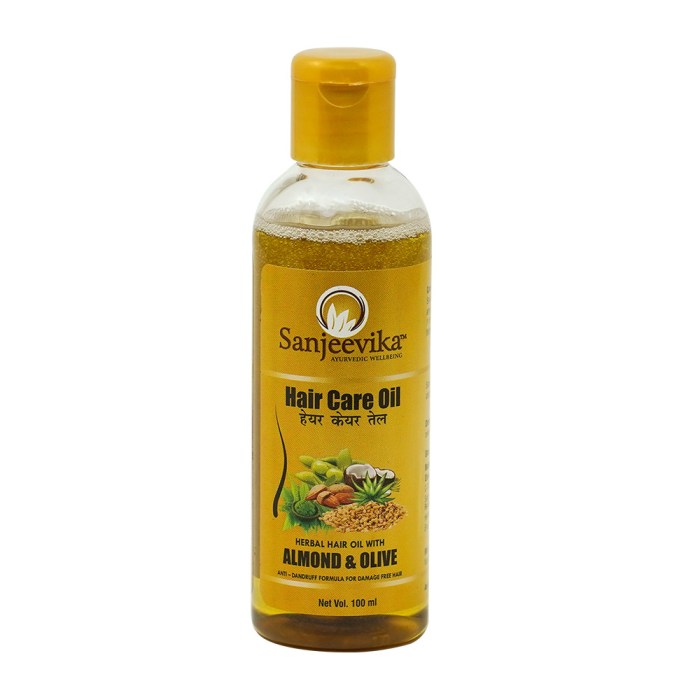
Hair oil treatments, while beneficial, can also have potential side effects and注意事项 if not used properly. It’s essential to be aware of these considerations to ensure a safe and effective hair care routine.
One potential side effect is scalp irritation. Some hair oils, particularly those containing strong fragrances or certain essential oils, can cause allergic reactions or irritation in some individuals. It’s important to test a small amount of the oil on a patch of skin before applying it to the entire scalp.
Another consideration is product buildup. Applying hair oil too frequently or in excessive amounts can lead to product buildup, weighing down the hair and making it appear greasy. This can also clog the scalp’s pores, potentially leading to scalp issues like dandruff or folliculitis.
Choosing the Right Hair Oil Treatment
Choosing the right hair oil treatment is crucial to avoid potential side effects and ensure the best results for your hair type and scalp condition.
- Consider your hair type: Different hair types have different needs. For example, dry hair may benefit from heavier oils like coconut or argan oil, while fine hair may prefer lighter oils like jojoba or grapeseed oil.
- Scalp condition: If you have a sensitive scalp, it’s important to choose oils that are less likely to cause irritation, such as almond or avocado oil.
- Read the ingredients list: Check the label for potential allergens or ingredients that may irritate your scalp. Avoid oils that contain harsh chemicals or synthetic fragrances.
It’s also a good idea to start with a small amount of oil and gradually increase the quantity as needed. This helps to prevent product buildup and allows you to assess how your hair and scalp react to the treatment.
Commercially Available Hair Oil Treatments

The market offers a wide array of commercially available hair oil treatments catering to diverse hair types and concerns. These products are formulated with carefully selected ingredients that nourish, protect, and enhance the overall health and appearance of hair.
The following table compares popular hair oil treatments based on their ingredients, benefits, and target hair types:
Popular Commercially Available Hair Oil Treatments
| Brand | Product Name | Key Ingredients | Benefits | Target Hair Types | Links |
|---|---|---|---|---|---|
| Moroccanoil | Moroccanoil Treatment | Argan oil, tocopherol | Hydrates, detangles, reduces frizz, adds shine | All hair types, especially dry, damaged hair | Learn More |
| Olaplex | Olaplex No. 7 Bonding Oil | Bis-aminopropyl diglycol dimaleate, coconut oil, jojoba oil | Repairs damaged hair, strengthens hair bonds, reduces breakage | All hair types, especially damaged, color-treated hair | Learn More |
| Briogeo | Briogeo Don’t Despair, Repair! Deep Conditioning Hair Mask | Shea butter, coconut oil, argan oil, almond oil | Intensely hydrates, repairs damaged hair, reduces frizz | All hair types, especially dry, damaged hair | Learn More |
| Kristin Ess | Kristin Ess Hair Oil Blend | Argan oil, coconut oil, jojoba oil, sweet almond oil | Nourishes, detangles, adds shine, reduces frizz | All hair types | Learn More |
| Living Proof | Living Proof Restore Perfecting Spray | Healthy hair molecule (OFPMA), coconut oil, jojoba oil | Repairs damaged hair, reduces frizz, adds shine, protects against heat | All hair types, especially damaged, color-treated hair | Learn More |
When choosing a hair oil treatment, consider your hair type, concerns, and desired results. It’s important to read the product label carefully and follow the usage instructions to ensure optimal results.
Hair Oil Treatment Tips and Tricks
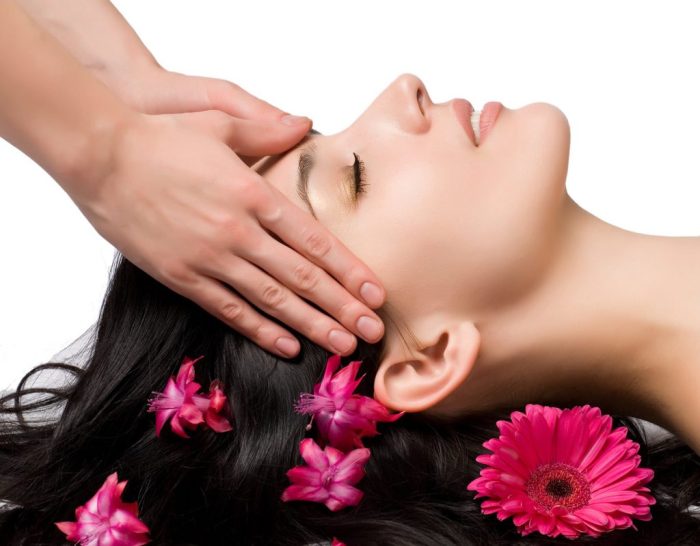
Unlock the full potential of hair oil treatments with these practical tips and tricks. Discover how to incorporate them seamlessly into your hair care routine, choose the right oil for your specific needs, and maximize the benefits for healthier, more radiant hair.
Selecting the Right Hair Oil
Choosing the right hair oil is crucial for achieving optimal results. Consider your hair type, concerns, and desired outcomes. For dry, damaged hair, opt for oils rich in nutrients and antioxidants, such as argan, coconut, or jojoba oil. For oily hair, lighter oils like grapeseed or tea tree oil may be more suitable.
For scalp issues, consider oils with antibacterial and antifungal properties, such as rosemary or neem oil.
Incorporating Hair Oil Treatments into Your Routine
Hair oil treatments can be incorporated into your hair care routine in various ways. As a pre-shampoo treatment, apply oil to dry hair and leave it on for 30 minutes to an hour before washing. This helps penetrate the hair shaft and nourish it deeply.
Alternatively, use oil as a leave-in conditioner after washing, focusing on the ends to prevent split ends and add shine. You can also add a few drops of oil to your shampoo or conditioner for an extra boost of hydration.
Maximizing the Benefits of Hair Oil Treatments
To get the most out of hair oil treatments, follow these tips:
- Warm the oil slightly before applying it to enhance absorption.
- Apply oil to slightly damp hair to facilitate even distribution.
- Massage the oil into your scalp and hair, focusing on the ends.
- Cover your hair with a shower cap or warm towel to create a warm, moist environment.
- Leave the oil treatment on for at least 30 minutes, or overnight for deeper conditioning.
- Rinse the oil thoroughly with lukewarm water and shampoo.
Last Recap
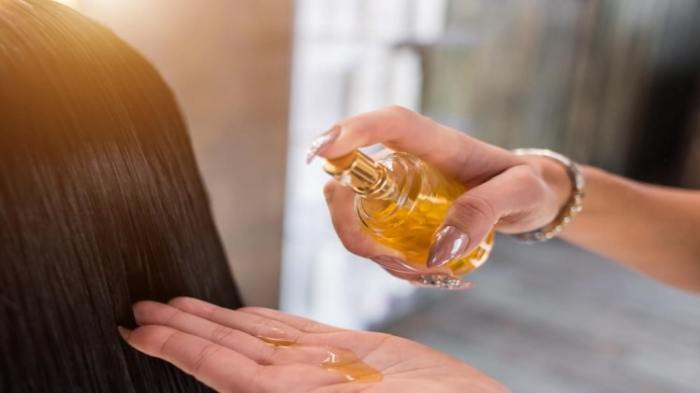
Hair oil treatments, when incorporated into a well-rounded hair care regimen, can work wonders for your hair’s health and appearance. Whether you prefer the simplicity of DIY recipes or the convenience of commercially available products, the key lies in choosing the right oil for your hair type and scalp condition.
Embrace the transformative power of hair oil treatments, allowing them to nourish, protect, and beautify your hair, revealing its radiant, healthy potential. Remember, consistency is key, and with regular use, you’ll witness the remarkable transformation of your hair, leaving it stronger, softer, and more manageable.
FAQ Corner
What are the different types of hair oil treatments available?
Hair oil treatments come in various forms, including natural oils like coconut, argan, and jojoba, as well as synthetic oils like mineral oil and dimethicone. DIY recipes allow for customization, while commercially available products offer convenience and often target specific hair concerns.
How often should I use hair oil treatments?
The frequency of hair oil treatments depends on your hair type and condition. For dry or damaged hair, weekly treatments may be beneficial, while those with oily hair may prefer bi-weekly or monthly applications.
Can hair oil treatments cause side effects?
While generally safe, hair oil treatments may cause scalp irritation or product buildup if used excessively. Choosing the right oil for your hair type and scalp condition, as well as avoiding overapplication, can help minimize the risk of adverse effects.
How can I choose the right hair oil treatment for my hair type?
Consider your hair type and scalp condition when selecting a hair oil treatment. For dry or damaged hair, nourishing oils like coconut or argan oil are suitable, while those with oily hair may prefer lighter oils like jojoba or grapeseed oil.
For scalp concerns like dandruff or psoriasis, consider oils with anti-inflammatory properties, such as tea tree oil or rosemary oil.



